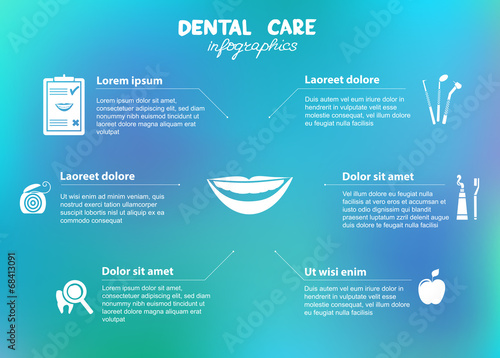The Following Period Of Oral Surgery: Development Innovations And Advancements Improving The Specialized
The Following Period Of Oral Surgery: Development Innovations And Advancements Improving The Specialized
Blog Article
Content Produce By-Demir Maloney
Welcome to the world of oral surgery, where developments and developments are forming the future of the field! In this exciting world, you'll witness the transformative power of robotics, the advanced wonder of 3D printing, and the game-changing effect of minimally intrusive methods.
The future of oral surgery holds an assurance of precision, effectiveness, and enhanced client end results. With the help of innovative robotics, doctors are able to perform intricate treatments with better precision and control.
3D printing innovation is transforming the production of dental implants and prosthetics, using customized options that fit perfectly into each person's distinct anatomy.
In addition, minimally invasive techniques are lowering post-operative pain and recovery time, allowing people to go back to their every day lives quicker.
Get https://daltontcefh.59bloggers.com/33446924/can-anybody-utilize-invisalign-what-to-know to explore the amazing advancements and breakthroughs that are improving the landscape of oral surgery!
Developments in Robotics
One major improvement in oral surgery is making use of robotic technology, which enables exact and reliable surgical procedures. With the help of robot systems, oral cosmetic surgeons have the ability to carry out intricate surgical procedures with enhanced precision, lessening the danger of human mistake.
These robotic systems are equipped with innovative imaging technology and precise instruments that enable cosmetic surgeons to browse with detailed anatomical structures effortlessly. By utilizing robotic technology, specialists can achieve greater surgical precision, leading to enhanced person outcomes and faster healing times.
On top of that, using robotics in oral surgery permits minimally invasive procedures, lowering the trauma to surrounding cells and promoting faster healing.
3D Printing in Oral Surgery
To boost the area of dental surgery, you can discover the subtopic of 3D printing in oral surgery. This ingenious technology has the potential to revolutionize the means dental cosmetic surgeons run and treat patients. Here are four key ways in which 3D printing is forming the area:
- ** Custom-made Surgical Guides **: 3D printing enables the production of highly exact and patient-specific surgical overviews, improving the accuracy and effectiveness of procedures.
- ** Implant Prosthetics **: With 3D printing, oral cosmetic surgeons can develop tailored dental implant prosthetics that flawlessly fit a person's special composition, causing far better end results and client fulfillment.
- ** Bone Grafting **: 3D printing makes it possible for the manufacturing of patient-specific bone grafts, minimizing the need for traditional grafting techniques and enhancing healing and recovery time.
- ** Education and Educating **: 3D printing can be made use of to develop practical surgical models for academic purposes, permitting dental surgeons to practice intricate treatments before performing them on individuals.
With its potential to improve precision, modification, and training, 3D printing is an interesting growth in the field of oral surgery.
Minimally Intrusive Methods
To further advance the area of dental surgery, embrace the possibility of minimally invasive methods that can substantially benefit both surgeons and clients alike.
Minimally invasive strategies are transforming the area by lowering medical injury, lessening post-operative discomfort, and increasing the recuperation process. These techniques include utilizing smaller cuts and specialized instruments to execute procedures with precision and efficiency.
By utilizing innovative imaging technology, such as cone beam computed tomography (CBCT), specialists can accurately intend and perform surgical procedures with very little invasiveness.
Additionally, using lasers in oral surgery enables accurate tissue cutting and coagulation, resulting in lessened blood loss and reduced recovery time.
With minimally invasive techniques, patients can experience faster healing, reduced scarring, and enhanced outcomes, making it an essential facet of the future of oral surgery.
Conclusion
So, as you can see, the future of oral surgery is unbelievably promising, with amazing developments and developments shaping the area.
From https://www.hellomagazine.com/healthandbeauty/20230309166159/my-sweet-smile-celebrity-teeth-whitening/ in robotics to the use of 3D printing and minimally intrusive techniques, dental surgeons are transforming the means they give treatment.
While some may bother with the potential cost related to these innovations, it is necessary to bear in mind that these modern technologies ultimately improve client end results and decrease recuperation time, making them well worth the financial investment in the future.
